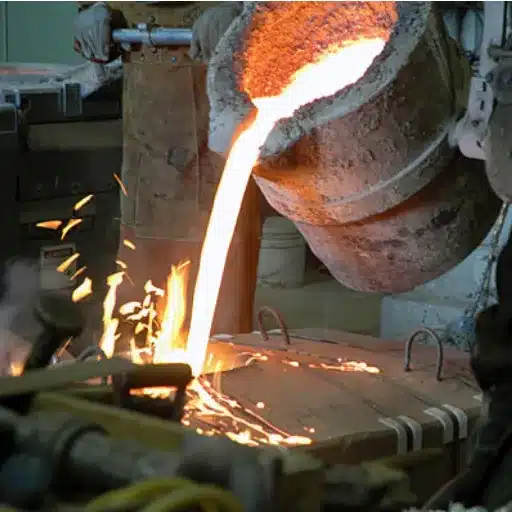Stainless steel coils, or tubing coils, are essential components in various industries. Stainless steel coils undergo a rigorous refinement process, which supports both robust industrial processes and precision in medical engineering practices. Stainless steel coils, especially, are a staple due to their properties and effectiveness in harsh working environments. This article highlights why stainless steel tubing coils are irreplaceable, as well as their unique properties, core applications, and their position as an industry standard.
What Exactly Is Stainless Steel Tubing Coil?
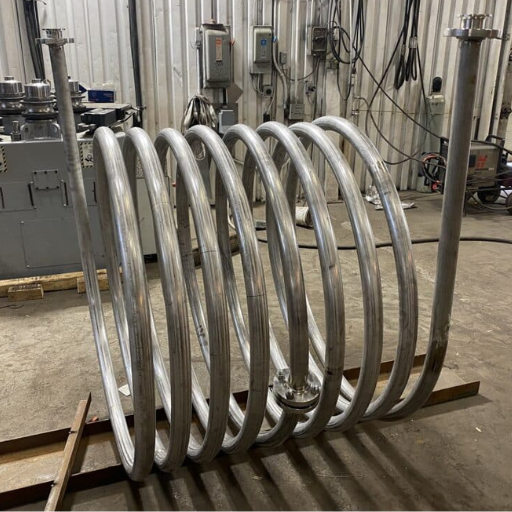
A stainless steel tubing coil is a stainless steel tube that has been bent into a helix structure for ease of storage. Stainless steel is highly praised for its ability to withstand corrosion, high durability, intense pressure, and rigorous temperatures. Due to such properties, it’s perfect for taxing utilizations. The coil shape is increasingly beneficial for the speedy transfer of heat, as well as efficient installation and space limitations. Stainless steel tubing coils are industry standard due to their reliable applications in chemical processing, energy production, medical instruments, and for any imaginable harsh condition that requires resilience for tears and rupture.
Understanding Stainless Steel Coil Tubing and Its Composition
Stainless steel coil tubing is made from superalloys that contain a mixture of iron, carbon, chromium, and nickel, with trace amounts of molybdenum. The percentages of chromium are critical, as its protective function ranges from 10.5% to 30%, forming a passive layer that slows oxidation and corrosion on the material’s surface. He added nickel enhances the material’s strength and ductility, especially in difficult situations, while molybdenum increases resistance to pitting and crevice corrosion in chloride-rich areas.
Higher-grade stainless steels, such as 304, 316, and 321, are also popular. For example, Grade 316 is particularly known for its exceptional resistance to corrosion due to the added molybdenum, making it best suited for marine or extremely acidic environments. Likewise, stainless steel coil tubing is subjected to various processes, such as annealing, to optimize its mechanical properties and ensure flexibility and durability. Because of these improvements, stainless steel coil tubing is widely relied upon in precision instruments as well as fields that demand safety and longevity.
Difference Between Stainless Steel Tubing Coil and Other Tube Materials
Stainless steel tubing coils stand out from other tubing materials because of their unique mechanical and chemical properties. Unlike materials like carbon steel or copper, stainless steel withstands corrosion far better due to its chromium content, which forms a passive oxide layer that prevents oxidation and degradation in harsh environments. Moreover, stainless steel tubing coils have greater tensile strength and temperature tolerance, which enables them to be used in high-pressure or extreme thermal conditions where other materials would fail.
Stainless steel coils also offer a clear advantage in terms of maintenance and durability. Compared to aluminum, which may corrode more readily under certain conditions, or plastic tubing, which can suffer from material fatigue over time, stainless steel coils require significantly less maintenance. Additionally, alloy composition changes, such as the addition of nickel and molybdenum, have improved stainless steel’s resistance to harsh chemicals, making it more suitable for use in the petrochemical, aerospace, and healthcare industries. The seamless construction of stainless tubing coils, combined with its consistent performance under stress, which is unmatched by most other tubing materials, reinforces its status as a reliable and durable solution for a wide range of applications.
The Chemistry Behind Stainless Steel: Chromium Into Iron
Adding chromium to iron marks one of the greatest innovations in chemistry, leading to the development of stainless steel. Chromium is typically added in amounts greater than 10.5%. It will react with oxygen in the environment and form a stable, imperceptible oxide layer on the surface of the stainless steel. This passive oxide film is self-repairing and does not permit further oxidation or corrosion even if scratched or damaged. The unique property that sets stainless steel apart from other carbon steels is that they do not oxidize and corrode during the same exposure period as carbon steels do.
The alloying step involves melting iron and chromium together at high temperatures, typically above 1,370°C (2,500°F). It takes a plain distribution at the molecular level. This means it has a homogeneous microstructure, which improves its mechanical properties, like its tensile strength and ductility. To further enhance it, other non-ferrous metals, such as nickel and manganese, are added to improve corrosion resistance and make it easier to work with. Other developed metallurgical processes led to the creation of certain grades of stainless steel designed for specific industry applications, such as improved resistance to pitting from chlorides in seawater for marine use or greater strength at high temperatures for aerospace applications.
Why Is Stainless Steel Tubing Coil Essential for High-Performance Applications?
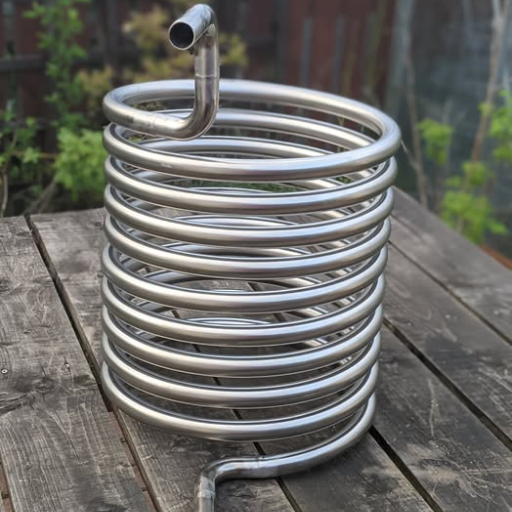
Stainless steel tubing coil is critical for high-performance usage due to stainless steel’s unique versatility, strength, and resistance to corrosion. The tubing coils can endure extremely high pressures and temperatures, making them helpful in demanding settings like the chemical processing, aerospace, and marine industries. The coiled structure of the steel coil helps to save space while providing an uninterrupted transfer of fluids or gases, which improves the general reliability of critical systems. Furthermore, the low maintenance and lengthy service life of stainless steel make it an economical option for applications that need dependable and durable performance.
Excellent Corrosion Resistance in Challenging Environments
The resistance to corrosion of stainless steel is attributed to a passive corrosion layer of chromium oxide that forms on its surface. This outer layer is self-healing and highly resistant to oxidation and deterioration, even in aggressive environments like saline water, acidic solutions, or industrial atmospheres. Research shows that some stainless steels, such as 316L and duplex steels, are better suited for harsh environments due to their higher Molybdenum and Nitrogen content, which improves resistance to pitting and crevice corrosion. This fact makes stainless steel an essential material in several industries, such as oil and gas, the marine sector, and wastewater treatment, where corrosive agents constantly pose a threat. Its strength reduces maintenance interventions and greatly increases operational lifespan, which improves economic and environmental efficiency in complex systems.
Durability and Reliability in Continuous Length Applications
For me, ensuring dependability and endurance for challenging applications with long lengths comes from selecting materials that can withstand strong mechanical forces and environmental conditions for long periods. Take stainless steel, for example. It is a prime candidate due to its high tensile strength, corrosion resistance, and consistent performance across a wide range of operating conditions. It’s a uniform structure over long periods that eliminates performance variations, ensuring reliability in harsh operating conditions common in the energy, infrastructure, and manufacturing industries.
Flexibility and Strength: The Perfect Balance
Striking the appropriate equilibrium between flexibility and material strength is essential in engineering materials, especially for those subjected to dynamic loading or deformation. For instance, advanced composite materials, such as carbon fiber-reinforced polymers, illustrate this perfectly. They allow for high stiffness-to-weight ratios while also resisting fatigue and extreme cyclic stress. These materials are also backbone reinforced. Other alloys, like titanium, are also known to have this exceptional type of duality and exhibit remarkable ductility for shaping, while having a yield strength great enough to withstand the intensive forces of mechanics. This level of balance is attributed to precision manufacturing, like additive manufacturing, which enables operators to construct material geometries with specific stress profiles in mind. With this, materials are better engineered to withstand the demanding performance and durability standards required in modern industrial uses.
What Are the Common Uses of Stainless Steel Coil Tubing Across Various Industries?
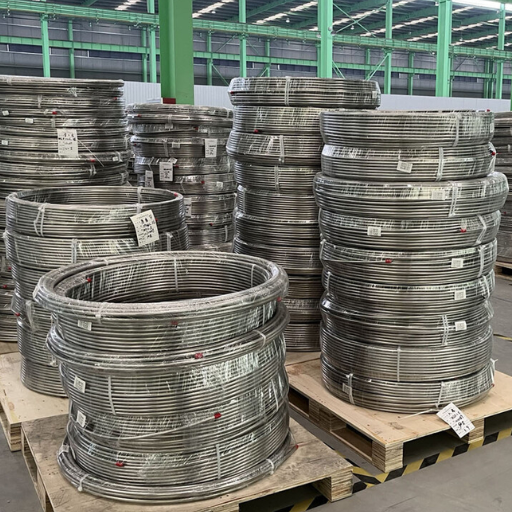
Due to its resistance to wear, corrosion, and adaptability, stainless steel coil tubing finds applications across various domains. In the oil and gas sector, it is extensively used for well control, chemical injection, and flowline processes. The medical industry uses stainless steel coil tubing for surgical instruments and fluid transfer devices because these components require a high level of sterility. Moreover, the aerospace sector uses it for hydraulic and fuel lines, where accuracy and dependability are paramount. Its flexibility also renders it beneficial for use in industrial processes such as heat exchangers and condensers, as well as plumbing and HVAC systems. All these applications highlight their value in sustained performance environments.
Oil and Gas: Coiled Tubing Applications
In today’s oil and gas processes, coiled tubing serves as a significant asset, combining effectiveness with versatility in multiple tasks. It is commonly applied in well intervention, where the design allows for a multitude of functions to be carried out, such as cleanouts, gas lifting, and acidizing, all without removing the well’s completion equipment. This method contributes to higher efficiency when coupled with minimized operational costs. Moreover, coiled tubing is often used for drilling activities in underbalanced conditions because it provides enhanced well control and mitigates the likelihood of formation damage.
Coiled tubing systems, equipped with integrated real-time monitoring and sensor technologies, enable operators to capture key performance indicators, enhancing the optimization of downhole processes. These phenomena, alongside the adoption of advanced alloys and thorough engineering, are widening the applicability scope of coiled plumbing in the oil and gas industry. Coiled tubing now functions accurately in environments such as HPHT wells, which are becoming more frequent in ultradeepwater and deepwater operations. Additional material science and manufacturing innovation have also improved coiled tubing’s durability and strength, enabling it to withstand even greater temperatures and pressures.
Chemical Processing and Food & Dairy Industries
Businesses in the chemical processing, food, and dairy sectors depend on technological improvements to enhance productivity, product quality, and safety standards. Purposefully designed machinery, including heat exchangers, mixing systems, and new filtration methods, is critical in meeting strict regulatory standards and ensuring quality. Monitoring temperature, pressure, and flow rate in real-time using modern automation and sensor technology enables optimal process control and minimizes waste in operation. Moreover, food and dairy manufacturing processes have benefited from faster production and improved cleanliness with the latest clean-in-place (CIP) technologies. These developments highlight a positive shift towards environmentally friendly and efficient production methods in these industries.
Automotive, Aerospace, and Marine Applications
With the latest innovations in the automotive, aerospace, and marine sectors, there has been a notable shift towards new materials, designs, and systems to help improve efficiency, safety, and performance. The aerospace and automotive industries are focusing on improving aircraft fuel efficiency by employing lightweight composite materials, such as carbon fiber-reinforced polymers, which help reduce overall weight without sacrificing structural strength.
The development of advanced driver assistance systems (ADAS) has marked a distinct shift in the automotive industry. These systems use artificial intelligence, along with cameras and sensors, to provide features such as lane-keeping, adaptive cruise control, and collision avoidance, which enhance driver safety and vehicle autonomy.
In the same way, the marine industry is heavily dependent on new developments in propulsion systems, such as hybrid and fully electric drivetrains, to operate more efficiently and reduce environmental harm. New hydrodynamic designs, along with real-time monitoring systems, improve fuel efficiency and meet increasingly strict environmental standards. These innovations from different industries show the trend toward sustainability, automation, and precision manufacturing of transport systems.
How to Select the Right Stainless Steel Tubing Coil for Your Application?
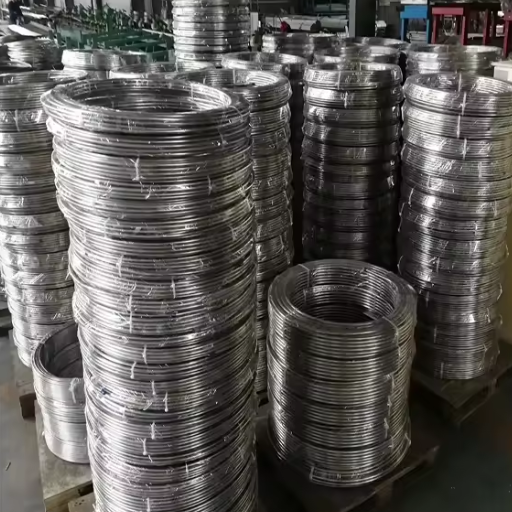
When selecting stainless steel tubing coils for your application, consider the following factors:
- Material Grade: Choose the appropriate stainless steel grade based on your application’s requirements, such as corrosion resistance, temperature tolerance, and mechanical strength. Common grades include 304 for general-purpose use and 316 for higher corrosion resistance.
- Dimensions: Verify the tubing’s outside diameter, wall thickness, and length to ensure compatibility with your system specifications.
- Pressure and Temperature Ratings: Ensure the tubing can withstand the operational pressure and temperature conditions of your application.
- Environment: Consider the environmental factors, such as exposure to chemicals, moisture, or extreme temperatures, that may impact the tubing’s durability and performance.
- Compliance: Confirm that the tubing meets relevant industry standards or certifications, such as ASTM or ISO, for safety and reliability.
By assessing these factors systematically, you can choose a stainless steel tubing coil that aligns with your application’s performance and durability needs.
Understanding Different Grades: 316 and Other Alloys
Different types of stainless steel are available, all with unique properties suitable for specific applications. One of them, 316 stainless steel, is well known for being incredibly resistant to corrosion in marine or chemical processing environments, especially when exposed to chemicals with high chloride levels. This is because molybdenum, which helps resist pitting and crevice corrosion, was added.
Additionally, other frequently used stainless steel grades are 304 and 430. Although 304 is austenitic like 316, it does not contain molybdenum, which makes its resistance to harsh corrosive environments weaker, but cheaper. On the other hand, grade 430 is classified as a ferritic stainless steel. It has good resistance towards corrosion and heat, but not as good as the ductility and weldability that austenitic steels like 316 do.
It is important to consider operating temperatures, exposure to aggressive chemicals, and required mechanical properties when selecting these grades. For example, 316 would be extremely useful for industries that work with saline solutions, especially in high temperatures, while 304 would be great for general-purpose tasks. The selection of a specific alloy is critical to precision operational needs, as every alloy offers a tailor-made blend of cost, material durability, and performance.
Considerations for Diameter, Thickness, and Custom Sizes
Careful consideration of structural integrity and optimal performance requires numerous precise design factors to be calculated, including diameter, thickness, and custom sizes. The selection of diameter usually depends on factors such as flow rate, pressure containment, or load-bearing capacity, especially when dealing with pipes and other structural components. Also, thickness is a critical parameter directly tied to the material’s ability to withstand internal or external stresses, such as pressure, temperature, and even mechanical impacts. Take, for example, materials with thin walls; those might work well in low-stress environments, but high-pressure settings require thicker walls to prevent deformation or failure.
To meet unique operational needs, custom sizing provides the option to craft industry and operational standards that do not conform to pre-defined standards. That is only possible because modern manufacturing techniques, such as precision machining or 3D modeling, allow components to be produced in significantly refined shapes while maintaining tolerances. Custom sizing is beneficial for the aerospace, energy, and medical engineering industries, which have very specialized performance requirements. Careful evaluation of those procedures ensures there is safety, efficiency, and cost-effectiveness for a wide range of operational scopes.
What Makes Stainless Steel Coil Tubing Cost-Effective in the Long Run?
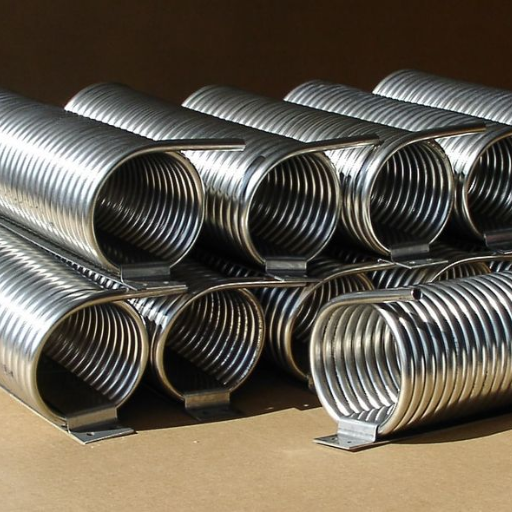
Stainless steel coil tubing is durable, resistant to corrosion, and low maintenance, which makes it cost-effective over time. Its ability to endure harsh environments reduces the need for frequent replacements, which saves on labor and material costs. In addition, its high strength-to-weight ratio allows for greater material efficiency, further reducing costs. This ensures long-term value, as enhanced durability leads to consistent performance and reduced operational disruptions.
Reduced Installation Time and Seamless Integration
New developments in engineering and design significantly reduce installation times, ensuring projects are completed on time without compromising quality. Prefabricated parts and modular designs improve the assembly process, reducing the labor required for on-site work. This method not only decreases construction timelines but also enhances precision as components are manufactured off-site. Moreover, advanced compatibility features allow for seamless integration with existing systems, so complex retrofitting procedures are not necessary. These innovations significantly improve cost efficiency and operational dependability while maintaining reliability throughout the installation’s lifecycle.
Long-Term Value Through Corrosion-Resistant Properties
From my perspective, adding materials that are unmatched in withstanding external environment factors offers reliable output, reduces the need for repairs or maintenance, and ultimately cuts down operational costs. This strategy enhances sustainability while improving resource management over a long time. Reducing the need for maintenance and prolonging the lifespan of installations, in turn, increases value.
How Does Stainless Steel Tubing Coil Perform in Specialized Environments?
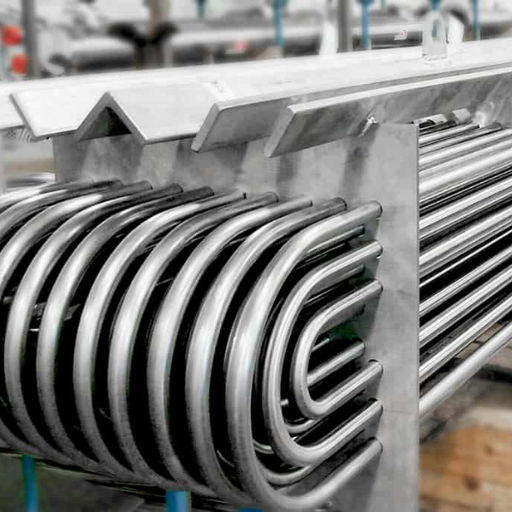
Due to its outstanding durability, corrosion resistance, and ability to withstand extreme temperatures, stainless steel tubing coils are used in many fields. Their strength makes stainless steel coils perfect for use in chemical processing, aerospace, and medical equipment. Stainless steel’s durability guarantees resistance to moisture and chemicals, non-reactivity, and dependable performance even under harsh pressure and temperature changes. Furthermore, stainless steel’s non-reactive and chemically inert nature makes it perfect for industries that demand high-grade hygiene and cleanliness. Therefore, stainless steel tubing coils are suitable for harsh and specialized applications.
Hydraulic Systems and Instrumentation Applications
The coils play a crucial role in the hydraulic systems of machinery due to their resistance to deformation or failure under pressure. Such systems use coils at pressures that may exceed 3000 psi, but these high-stress environments, while demanding reliability and precision, provide the required extreme endurance. Also, stainless steel’s reliability does not end there, as it is also resistant to corrosion from hydraulic fluids and other external environmental factors, ensuring reliable service in heavy machinery and aerospace hydraulics.
Stainless steel tubing coils are prized for their non-reactive and smooth surfaces, which help to streamline the flow of fluids or gases, preventing contamination and increasing measurement accuracy. Some industries that utilize stainless steel tubing for instrumentation include petrochemical processing, industrial automation, and laboratory equipment.
In addition, innovations in pipe welding and seamless construction have improved the structural performance of these coils, allowing them to withstand more demanding conditions. When combined with the low maintenance needs of stainless steel, its longevity further reinforces its necessity in modern industrial systems.
Fuel and Exhaust Systems Requirements
To guarantee safety, efficiency, and compliance with legal requirements, the Fuel and exhaust systems of industrial applications involve stricter engineering and operational policies. Modern fuel systems require precise control of pressure and flow, aiding proper combustion and minimizing energy loss or waste. As a result, proficient fuel injectors and advanced filtration systems that meet high-pressure capabilities to filter out contaminants detrimental to system performance must be incorporated.
Exhaust systems must also have the capability to effectively handle the transportation and treatment of emissions to reduce the potential environmental danger they pose. Significant design criteria include high resistance to temperatures and corrosion, as well as compliance with emission regulations such as EPA Tier 4 and Euro 6 levels. Vital in achieving reduced emissions, catalytic converters and particulate filters containing ceramic and stainless steel materials contribute to their durability. Moreover, the use of computational fluid dynamics (CFD) modeling in optimizing exhaust flow paths eliminates energy loss and maintains backpressure to operationally dependable levels, thus bolstering reliability. Meeting the demands for precision performance and environmental accountability is made possible through such innovations in fuel and exhaust systems.
Structural and Hygiene-Critical Environments
In the healthcare, food, and pharmaceutical industries, structural and hygiene-critical environments are necessary due to the need for sterility and contamination control. The architectural design of these spaces incorporates smooth, non-porous surfaces that are easy to clean and inhibit bacterial growth. Durable materials that can withstand chemical disinfectants, such as stainless steel, high-density polyethylene (HDPE), and antimicrobial coatings, are routinely used. The growing use of modular construction techniques has further accelerated the installation of cleanrooms and laboratories, while conforming to the stringent ISO 14644 standard for particulate inclusion within controlled environments. Also, the sophisticated HVAC apparatus classifies air using HEPA and ULPA filters, which control living biological matter and particulates suspended in the air to regulate air cleanliness. These systems also precisely control temperatures and humidity to operational needs. All these measures together comply with industry requirements and ensure product protection and personnel safety.
Reference Sources
-
Why Stainless Steel Tubing Coil is Essential for Industrial Applications – Discusses the importance of stainless steel tubing coils in various industries, highlighting their durability and corrosion resistance.
-
What Is Stainless Steel Coil and Its Uses? – Explains the versatility and applications of stainless steel coils across industries like construction and automotive.
-
Stainless Steel Coil Tubing: Hot and Cold Rolled – Details the benefits of coiled stainless steel tubing, including its resistance to harsh environments and mechanical stress.
Frequently Asked Questions
Q: What makes stainless steel coil tube so durable compared to other materials?
A: Stainless steel coil tubes derive their exceptional durability from a unique combination of properties. Its high tensile strength allows it to withstand significant pressure without deformation, while its corrosion resistance prevents deterioration even in harsh environments. The addition of chromium and nickel in the alloy creates a self-healing protective oxide layer that continuously renews itself when damaged. This inherent durability makes stainless tubing the preferred choice for applications that require a long service life with minimal maintenance, especially in challenging conditions where other materials would deteriorate quickly.
Q: How does corrosion resistance make stainless steel tubing ideal for various industries?
A: Corrosion resistance is perhaps the most valuable characteristic of stainless steel tubing, making it indispensable across various industries. The chromium content (minimum 10.5%) forms a passive oxide layer that prevents rust and corrosion even when exposed to acids, chemicals, and harsh environments. This property is crucial for food processing equipment, where hygiene is paramount, in medical equipment that requires sterilization, and in chemical processing, where corrosive substances are handled daily. Additionally, this resistance extends the operational lifespan of pipeline systems in marine environments, significantly reducing replacement costs and downtime for maintenance.
Q: What specifications should I look for when selecting stainless steel coil tube for industrial applications?
A: When selecting stainless steel coil tube for industrial applications, several key specifications deserve attention. First, identify the appropriate ASTM standard, such as ASTM A269 or A213, that matches your application requirements. Consider wall thickness – thicker walls provide better pressure resistance, but they also affect flexibility. Determine the optimal grade (304, 316, 321, etc.) based on your corrosion resistance needs, as higher nickel content generally offers better protection against specific corrosive environments. Additionally, evaluate tensile strength requirements, temperature ranges, and compatibility with required fittings. For specialized applications, custom specifications regarding surface finish, precise dimensional tolerances, and specialized testing certifications may be necessary.
Q: How is stainless steel coil tube utilized in the food processing industry?
A: In the food processing industry, stainless steel coil tube plays a critical role in maintaining hygiene and product integrity. These tubes are extensively used in heat exchangers, pasteurization equipment, and transfer lines due to their non-porous, easy-to-clean surfaces that prevent bacterial growth. The 316 grade, containing higher levels of nickel and molybdenum, offers enhanced resistance to corrosion from acidic foods and cleaning solutions. Stainless tubing also remains inert when in contact with food products, preventing flavor contamination. Additionally, their ability to withstand repeated high-temperature sanitization cycles without degradation makes them ideal for maintaining the strict hygiene standards required in food processing facilities.
Q: What advantages do stainless steel tubing solutions offer for fuel lines in transportation systems?
A: Stainless steel tubing solutions provide numerous advantages for fuel lines in transportation systems. Their superior corrosion resistance prevents degradation from exposure to fuels, road salts, and environmental conditions, significantly extending service life. The high tensile strength of stainless tubing allows for thinner walls while maintaining pressure integrity, reducing weight without compromising performance. These tubes resist vibration fatigue, which is crucial in vehicle applications, and retain their structural integrity across extreme temperature variations. Additionally, stainless steel is compatible with modern biofuels that might degrade other materials, and its low permeation rate prevents fuel vapor emissions, helping vehicles meet strict environmental regulations.
Q: Why is stainless steel coil tube preferred for medical equipment applications?
A: Stainless steel coil tube is the material of choice for medical equipment due to several critical properties. Its biocompatibility makes it safe for use in contact with human tissues and bodily fluids. The exceptional hygiene capabilities result from its non-porous surface that resists bacterial growth and allows for thorough sterilization. Medical-grade stainless tubing withstands repeated autoclave cycles without degradation, maintaining dimensional stability and performance. The material’s corrosion resistance protects against disinfectants and bodily fluids, while its durability ensures reliable long-term function in devices like endoscopes, surgical instruments, and fluid delivery systems. Additionally, specialized finishes can further enhance performance for specific medical applications.
Q: What are the challenges of installing stainless steel tubing in pipeline systems?
A: Installing stainless steel tubing in pipeline systems presents several challenges that require specific expertise. The material’s higher hardness compared to carbon steel makes cutting and fitting more difficult, often requiring specialized tools. Proper bending techniques are essential, as stainless steel work-hardens during manipulation, which can lead to cracks if not appropriately managed. When joining sections, preventing galvanic corrosion becomes critical when connecting to dissimilar metals. Welding stainless tubing requires careful temperature control and the use of proper filler material to maintain corrosion resistance at the connection points. Additionally, the thermal expansion rate of stainless steel exceeds that of carbon steel, so it necessitates the use of appropriate expansion loops or compensators in longer runs, especially in systems that experience temperature fluctuations.
Q: What is the wide range of applications for stainless steel coil tube beyond industrial uses?
A: Beyond industrial applications, stainless steel coil tube serves an extensive range of applications across diverse fields. In architecture, it creates durable, corrosion-resistant handrails, structural elements, and decorative features. The renewable energy sector utilizes these tubes in solar thermal systems and geothermal heat exchangers. In scientific research, stainless tubing delivers gases and liquids in laboratory equipment. Marine applications include hydraulic systems, instrumentation lines, and seawater handling systems. The aerospace industry employs specialized grades for hydraulic systems and fuel lines. Even the art world has embraced stainless steel tubing for creating durable outdoor sculptures that maintain their appearance despite weather exposure. This versatility stems from stainless steel’s combination of strength, formability, and exceptional resistance to environmental factors.
Q: How do different nickel content levels affect the performance of stainless steel tubing in corrosive environments?
A: Nickel content significantly influences stainless steel tubing performance in corrosive environments. Higher nickel percentages (8-14% in 304/316 grades) enhance resistance to reducing acids, such as sulfuric and phosphoric acids, while also improving overall corrosion resistance in environments containing chloride. The addition of nickel stabilizes the austenitic crystal structure, providing better ductility and formability without sacrificing strength. In particularly harsh environments, super-austenitic grades containing 20-25% nickel offer exceptional protection against stress corrosion cracking and pitting. However, in strongly oxidizing environments, ferritic stainless steels with lower nickel content may perform better. The optimal nickel content depends on the specific corrosive chemicals, temperature, concentration, and mechanical stresses the tubing will encounter during service.

